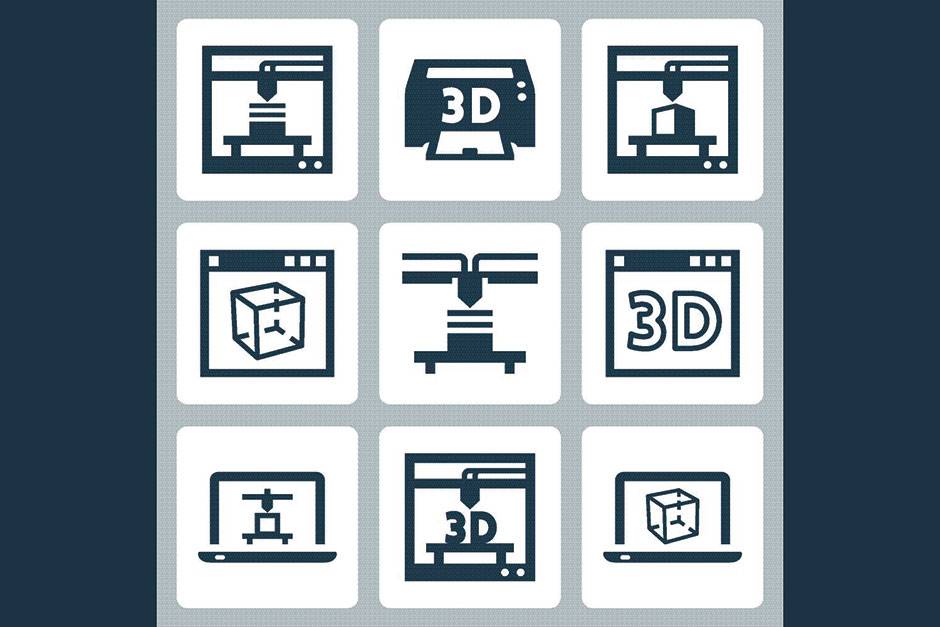This is all underpinned by a focus on innovation across all sectors, including manufacturing, with the government aiming to increase the contribution of this sector as a per cent of the GDP from 9 per cent in 2014 to 25 per cent in 2025. This pioneering environment welcomes Additive Manufacturing (AM), or 3D printing, to take centrestage, particularly following the launch of the Dubai 3D Printing Strategy.
AM technology has existed since the 1980s and has been integrated into assembly lines since the early 1990s. But three events have more recently brought it to the world’s attention like never before. The first of these came in 2008, when patents for AM technologies began to expire and paved the way for innovation and wider use.
The second took place in 2012, when manufacturers of 3D printers saw their stock prices increase by over ten times – creating significant excitement in the world’s capital markets – before dropping back again to pre-2012 prices over the next two years. The third has stretched over the past few years, when rapid advances have been made in the software and materials that facilitate the application of AM technology.
These events have driven the improvement and adoption of AM technologies. By 2014, PwC surveyed 100 manufacturing companies and found that 11 per cent of them had switched to volume production of 3D printed parts or products. In 2016, this was followed by an EY report which revealed that a quarter of global manufacturing companies were using 3D printing, while another 12 per cent were considering it.
Based on the current rate of adoption, AM is on its way to capturing at least 5 per cent of the $12.8 trillion global manufacturing economy, representing a value of $640 billion. Applied to the UAE, where the manufacturing industry is worth $31.5 billion, AM could create a $1.6 billion market opportunity.
While there is relatively low market penetration for AM in the UAE at the moment, it is certain that it will continue to claim a greater share as companies increasingly recognise the myriad benefits this method can offer. These include increased geometric complexity; decreased system complexity; increased customisation; enhanced performance and productivity; faster turnaround and production time; reduced stock levels, costs and waste; and localised manufacturing.
The beauty is that these benefits can be realised across a vast range of industries – from aviation and real estate to healthcare and retail.
AM is impacting many industries, and the UAE is no different to other progressive nations in this respect. The challenge is identifying where it adds most value to an organisation. One of the areas that AM will have a direct and noticeable impact on the UAE is inventory management.
Virtual inventories – or what we call “digitizing inventory” – has direct financial benefits for all types of companies and industries. A high number of multinationals are venturing into virtual inventories and this is a field that will see AM becoming a key enabler technology along with the software systems that support it.
UPS acquired a multi-technology specialised 3D printing service provider, and in partnership with SAP launched a service called “Direct Manufacturing”, which offers companies actual real time JIT part production. GE Additives started certifying AM providers in different markets to produce parts on their behalf. Over the next few years, this service is projected to grow exponentially and disrupt a number of sectors including logistics and warehousing, redefining the meaning of just-in-time production.
The UAE is perfectly positioned to become a regional centre for AM production. In the same way that Jebel Ali Port transformed Dubai into the regional re-export hub, AM will enable the UAE to become the manufacturing platform for AM parts in the region.
It is important to note that actual 3D printers and machines comprise no more than 40 per cent of an AM process. A large part of AM’s value is derived from having an integrated AM infrastructure including design optimisation, material qualification and selection, post-production processing, and a mix of different AM technologies. There are seven different 3D printing technologies, and each has its pros and cons.
The materials for 3D printing also vary significantly; in 2009 there were 12 AM materials and today there are over 750 materials to work with. There is no one size fits all technology in AM.
Faced with this variety, many businesses lack the knowledge and confidence to identify the right technology and application to meet their needs. This uncertainty limits a company’s ability to quantify the benefits of the technology and incorporate it into their business.
To drive the adoption of 3D printing in the UAE, AM service providers such as Immensa Technology Labs take away this uncertainty by bridging the gap between expert AM knowhow and its practical and viable uses across different industries.
The writer is CEO of Immensa Technology Labs.
Courtesy: Gulf News


